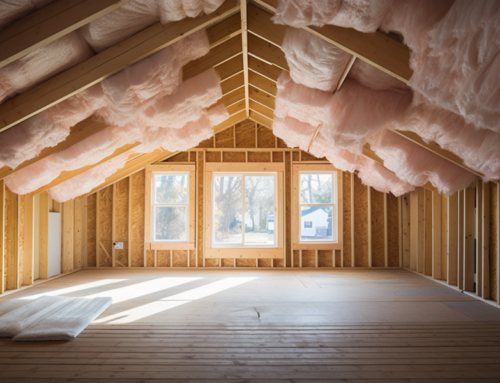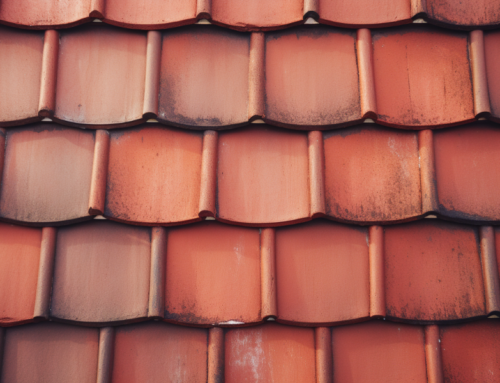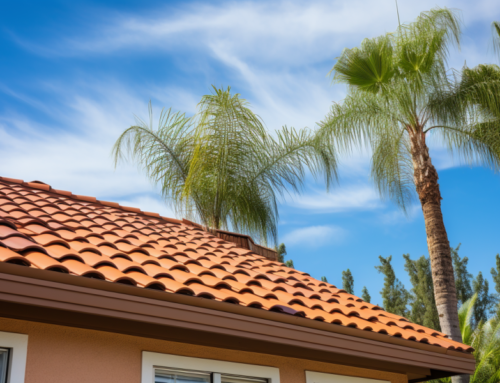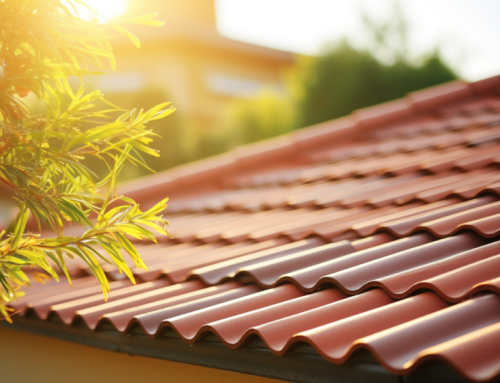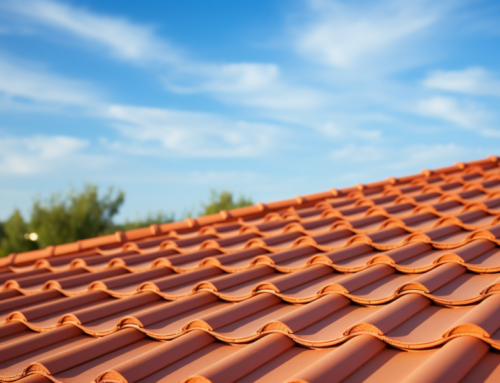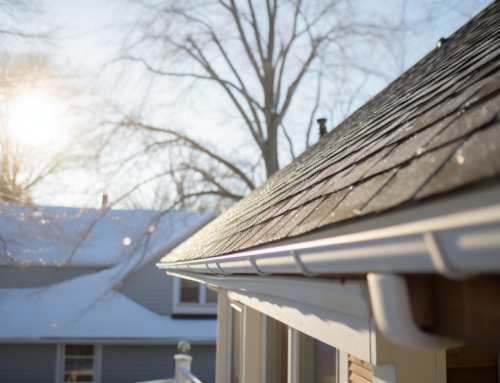Are your roof shingles blown off, and you are wondering what to do? You have come to the right place as we’ll guide you through the process of repairing such a roof. You will know how to replace missing shingles, get matching shingles, and other DIY roof repair tips.
What Causes Shingles to Get Blown Off?
Roof shingles are designed to withstand various weather conditions, but sometimes they can still get blown off. Understanding the causes behind shingles getting blown off can help you take appropriate preventive measures. Here are some common factors that can lead to shingles being blown off:
Severe Weather
Strong winds, especially during storms or hurricanes, can exert immense pressure on your shingle roof. If your shingles are not properly installed or are aged and weakened, they may not be able to withstand the force. This can result in damaged roof shingles or them being blown off.
Poor Installation
Improper installation when you replace shingles can make them more susceptible to getting blown off. If the roofing contractor did not secure the shingles correctly. Or perhaps they used inadequate roofing nails. The shingles may not have the necessary strength to withstand strong winds.
The last thing you want is to spend too much replacing blown-off shingles due to a poor job. You should know this if you hired a pro for the job and the shingles blew off within a few months.
Aging and Wear
Over time, shingles can become brittle and lose their flexibility due to exposure to sunlight, temperature fluctuations, and other environmental factors. This aging process weakens the shingles, making them more prone to getting blown off during storms or high winds.
Most work involving replacing shingles or installing new shingles comes from roof damage. You must find a professional roofer to set them properly when your shingles blow off.
Faulty or Missing Fasteners
Shingles are typically secured to the roof deck using roofing nails or adhesive strips. This roofing material requires proper fastening.
If the fasteners are faulty, damaged, or missing, the shingles may not be properly anchored, making them vulnerable to being blown off by strong gusts of wind. The best roofing companies will understand how to repair them and set them properly to withstand more pressure.
Prior Damage or Repairs
Shingles that have been previously damaged or repaired may have compromised integrity. Cracked shingles or those that have been improperly patched may be more likely to get blown off during severe weather conditions.
This is why regular inspection is necessary. You can discover and repair all the damaged shingles before they become a real issue.
Lack of Maintenance
Neglecting regular roof maintenance can contribute to shingles becoming loose or damaged. Debris accumulation, such as leaves, branches, or moss, can add weight and create stress points on the shingles, making them more susceptible to being blown off in high winds.
It takes a low to repair shingles that have blown off. It is, therefore, better to take preventive measures early than spend money on them later.
By understanding these causes, you can take proactive steps to prevent shingles from getting blown off. Regular roof inspections, proper installation, timely repairs, and routine maintenance can help ensure the longevity and durability of your roof, protecting it from potential damage.
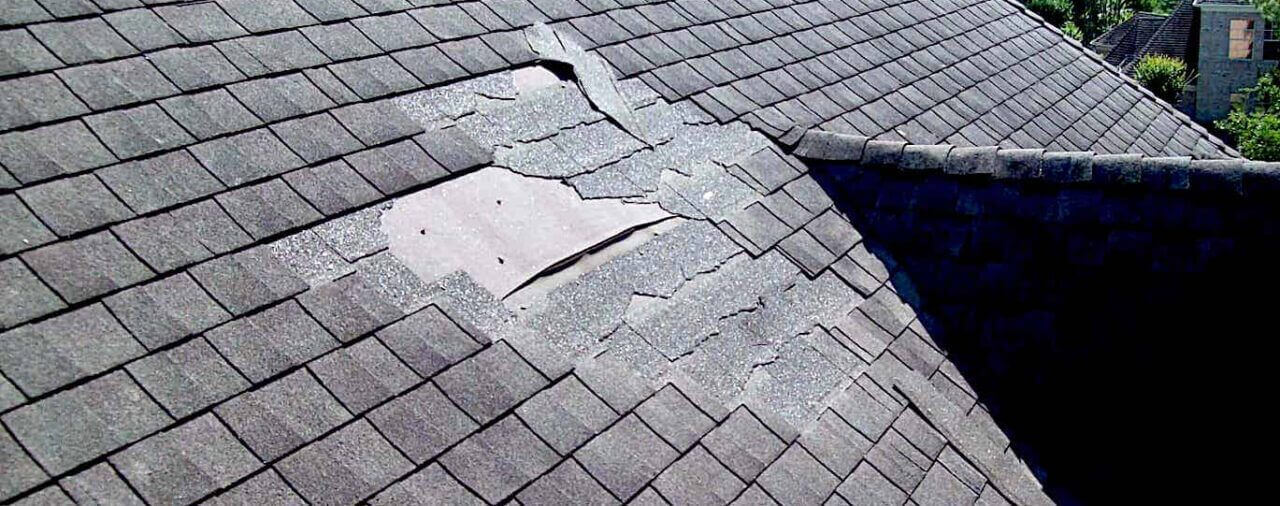
How to Repair Roof Shingles Blown Off
When you notice even a single missing shingle on your roof, the best solution is an immediate replacement. You must carefully pry the old shingles and install new materials to withstand the weather. Here is a step-by-step guide for you.
Step 1: Assess the Damage and Gather Materials
First things first, carefully assess the extent of the damage. Inspect your roof to identify all the damaged asphalt shingles that need to be replaced. Ensure you have the necessary tools and materials on hand before you begin the repair process. Here’s a list of what you’ll need:
- Pry bar or nail puller
- Utility knife
- Roofing cement
- Replacement shingles (make sure they match your existing shingles)
- Adhesive strips or roofing nails
- Safety equipment (gloves, goggles, and sturdy footwear)
You need to work on every roof shingle around the damaged area and install new roof shingles properly. So, like any other roof repairs you may have done, gathering the necessary tools is extremely crucial.
Step 2: Remove the Damaged Shingles
Once you have everything ready, it’s time to remove the damaged shingles. Start by carefully prying up the shingle directly above the damaged one. Use the pry bar or nail puller to lift the shingle, careful not to cause further damage. Remove all the old nails from the shingle and any remaining nails from the roof deck.
Next, take your utility knife and cut the adhesive or nail strip holding the damaged shingle in place. With the strip cut, you can now carefully lift and remove the damaged shingle from the roof. Be cautious not to disturb the surrounding shingles during this process.
Step 3: Replace the Shingles
With the damaged shingle removed, it’s time to individually replace it with a new one. Apply a layer of roofing cement to the back of the replacement shingle. This will help secure it in place and prevent any future issues. Carefully position the new shingle in the vacant spot, ensuring it aligns properly with the surrounding shingles.
Gently press down on the new shingle to secure it in place. If you’re using adhesive strips, peel off the backing and press the shingle firmly onto the adhesive. If you’re using roofing nails, carefully hammer them into the designated nailing strip area of the shingle.
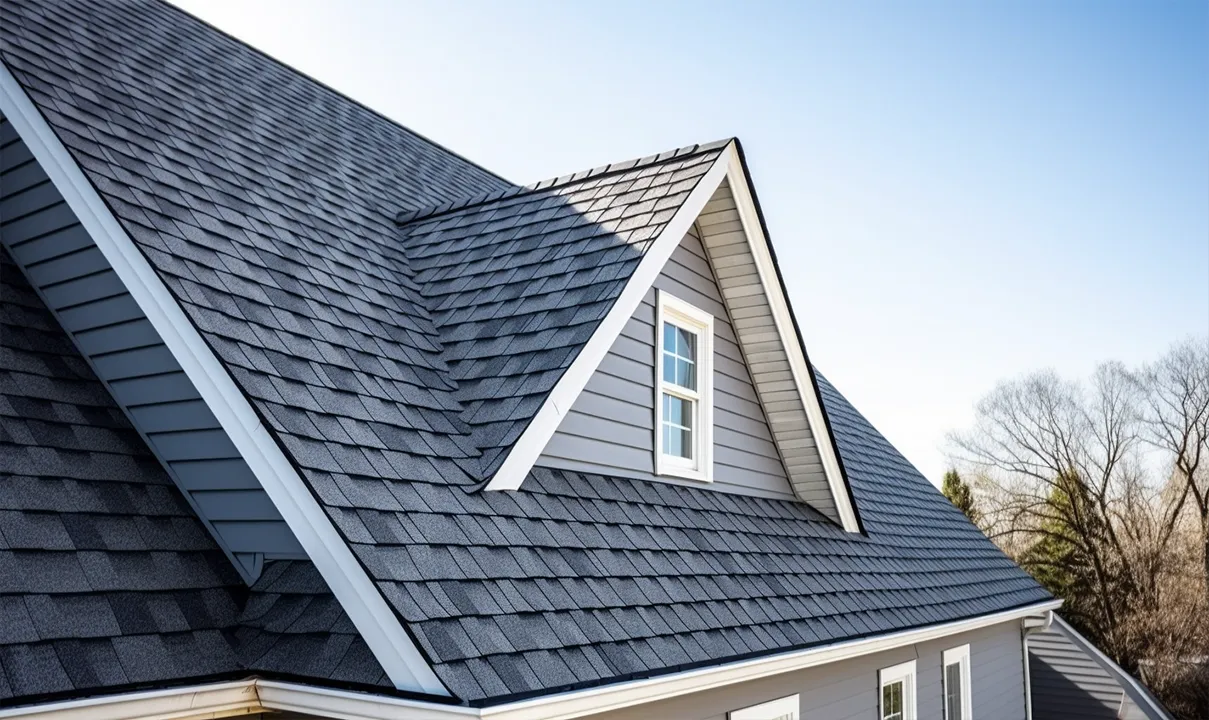
How to Prevent Your Roof from Getting Blown Off
To avoid having to repair roof shingles blown off in the future, here are some preventive measures you can take:
- Ensure Proper Installation: Make sure your roof is installed correctly by hiring a reputable roofing contractor. Faulty installation can lead to shingles blowing off more easily during severe weather conditions.
- Regular Inspections: Conduct routine inspections of your roof, especially after storms or strong winds. Look for any loose shingles or signs of damage, and address them promptly before they become larger issues.
- Maintain Your Roof: Keep your roof in good condition by cleaning it regularly and removing any debris that may accumulate. Trim overhanging tree branches that could potentially damage your roof during storms.
Conclusion
Repairing roof shingles blown off doesn’t have to be a daunting task. By following the step-by-step guide outlined in this article and taking preventive measures, you can ensure your roof remains intact.
With proper maintenance, your roof will continue to provide shelter for years to come. Remember to prioritize safety during the repair process, and if you’re unsure about any aspect of the repair, consult a professional roofing company.
Do you need a roof replacement after storm damage? Your roofing experts at San Diego County Roofing & Solar have got you covered. Get in touch today and enjoy the services of this professional roofer.





